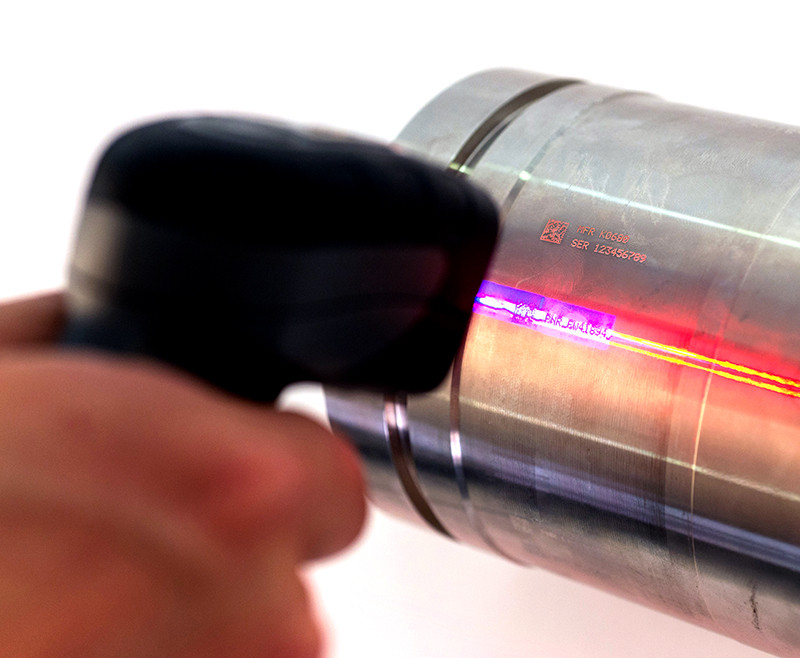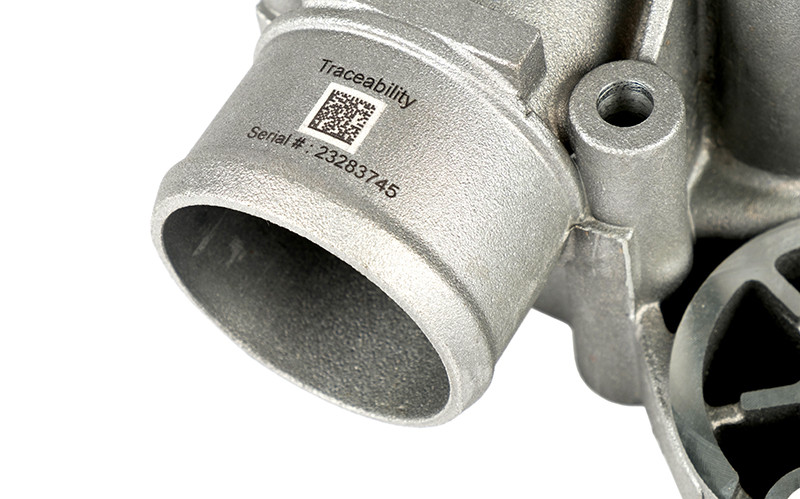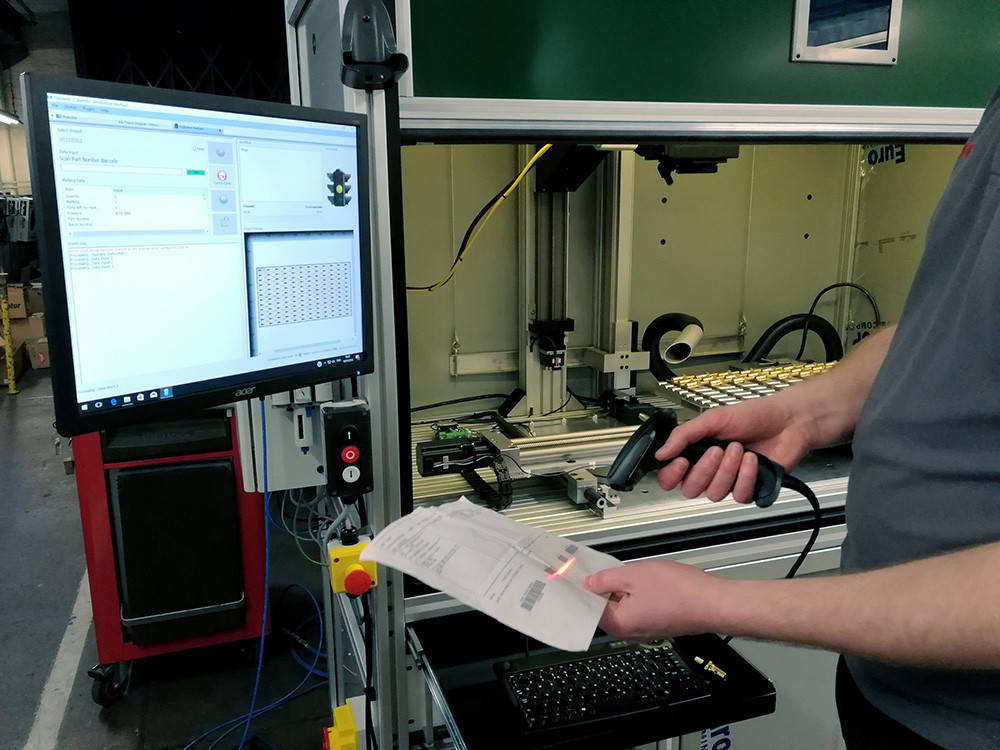Marking technology, in the modern manufacturing landscape, is the bringing together of a physical part or component, with the digital world. Part marking has been a necessity in many industries for decades but now delivers tangible benefits beyond, the very important, role of tracking and tracing components.
The scope of part marking has broadened to a very simple method of collecting data, helping to bridge the gap between manufacturers and the foundation of the fourth industrial revolution.
The process of collecting data begins with the application of a unique ID on every component, as early in the manufacturing process as possible. Many manufacturers are already required to do this for quality assurance purposes or to be able to supply certain markets.
The process of applying a unique ID to each component and recording it on a database, is an opportunity for manufacturers to collect data across the factory.

Once the unique ID is applied, it can be scanned at multiple points throughout the factory, from machining and assembly to warehouse and installation, amassing a wealth of data associated with each ID. Scanning the unique ID can be achieved very simply, such as using a low-cost handheld scanner, or using integrated machine vision.
The software used to programme and operate marking machines links the marking process to automatic record creation, and records can only be created when an item is marked, eliminating the possibility of an error in the data. This feature can be extended to ensure consistent data collection, requiring all operators at different points in the factory to scan the unique ID before each process commences.
A large range of data can be linked to each unique ID, from operator and environmental data to images and CCTV footage. This data can be used to analyse the performance of the factory, improving a range of processes and, perhaps most importantly, respond quickly to isolate quality deviations.
The best way to do this is with a 2D Data Matrix Code. Each Data Matrix can store up to 3116 numbers or 2335 alphanumeric characters, have built in error proofing and are believed to be the most secure (less hackable) barcode.

There are several established methods of applying a Data Matrix Code to a part; dot peen marking, laser engraving and chemical etching machines.
These machines can apply a Data Matrix code directly to a part, preferred by many manufacturers, rather than a label which are easily damaged or removed. Data Matrix are suitable for use on small or large components. Some industries require several codes to be applied to a single part and with the ability of marking equipment, such as lasers, to engrave smaller than 0.2sqmm – it is possible to use them on the most compact components.
Laser engraving has become commonplace within some industries, such as medical applications, especially since the advent of Unique Device Identification (UDI) legislation. Automotive supply chains and OEMs are increasingly integrating laser marking in their production lines as they realise the competitive advantages which can be levered with the technology.
The contactless nature of laser engraving machines means they are increasingly being adopted by manufacturers to apply a unique ID directly to their products.
The benefits of contactless marking have been proven through the cost savings and competitive advantages realised by manufacturers already using the technology. Contactless marking eradicates the need to clamp components being engraved. This eliminates the possibility of damaging the product but also means that fixtures do not need to be designed and manufactured for each model or component variation, reducing waste and saving money. The competitive edge comes from an ability to quickly change a production line from manufacturing one model to another, without needing to order and install new fixtures for the marking process. Not only does this save time and money, it helps manufacturers to be flexible when reacting to market trends.

Fibre lasers are ideal for marking applications due to their low running costs and reliability.
Fibre lasers consume very little power, require almost no maintenance and the average diode life exceeds 50,000 hours. Fibre lasers are integrated in a variety of formats to suit different factory environments, only requiring a light-safe enclosure to prevent exposure to the light source.
When integrated onto a production-line with machine vision, lasers can mark a unique ID and perform a 100% quality check on components in under 0.5 seconds on a moving conveyor. Portable lasers quickly and easily engrave large, immobile and heavy items, successfully marking Vehicle Identification Numbers (VIN) onto chassis and projects such as the Heart of Steel in Sheffield. The latest laser marking application to apply a unique ID to large or multiple components, are laser workstations. These mobile workstations can be positioned anywhere in the factory for loading parts into a large, modular enclosure, ready to mark a unique ID.


